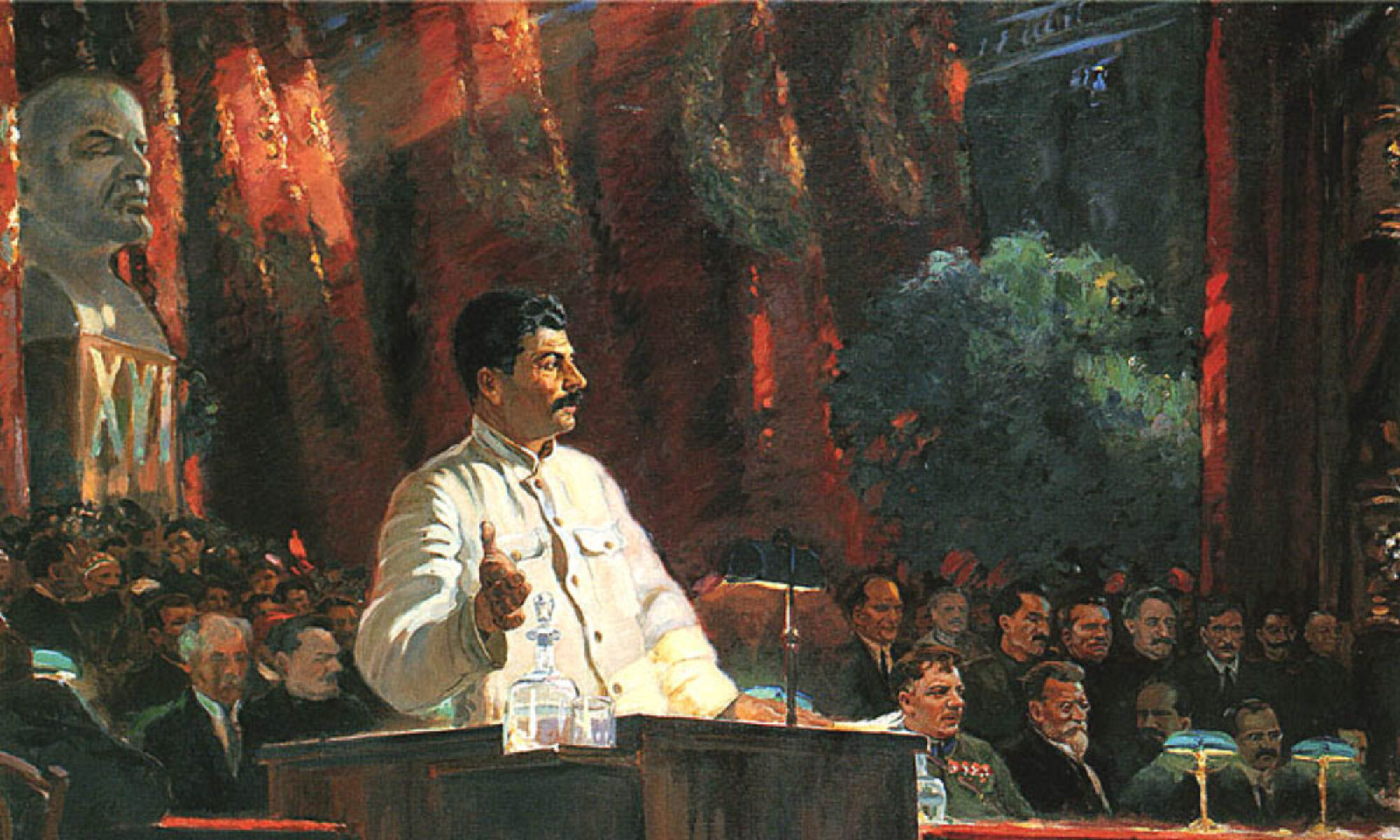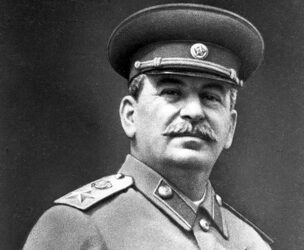Reading the piece from Pasha Angelina, it is clear that she approves of Stalin’s efforts in the country side. At one point she says, “It was with my heart rather than my mind that I had apprehended the grandeur of what Stalin and the party were doing in the countryside” (307). This is all happening to Angelina while thousands of other people are struggling to survive under these same policies. What do we make of that, and how do we reconcile this with the fact that collectivization as a whole killed millions? Why do you think Angelina was able to be successful, and how many people could have actually been just as successful? Finally, we know that the Soviet Government carefully controlled the flow of information into, out of and throughout its nation. Does that change our perception of her story?
Drew Schiano
Magnetic Mountain
Magnitogorsk was a major source of steel for the Soviet Union for several decades after its “heroic” period. However, as its significance as a symbol of revolutionary transformation declined. Magnitogorsk was founded in 1929 and built around what would become the world’s largest steel plant. This was key project in the First Five Year plan. “targets were to be achieved ahead of schedule notwithstanding bottlenecks in supplies, the harshness of the elements, and the fact that the overwhelming majority of workers lacked basic industrial skills”. How do you think the USSR was able to become so advanced in such a little time compared to the other capitalist countries? Was the people working in fear of Stalin? How were they able to get so many people by 1932 to be working for them and be able to know how to do the job when they had little to no knowledge to start?
Brute Strength or Harsh Reality
In the section we read from Behind the Urals, there seems to be a recurring theme: the work was hard, but we were hardier. Take for example this passage:
We both donned army shirts, padded and quilted cotton pants, similar jackets, heavy scarves, and then ragged sheepskin coats. We thrust our feet into good Russian ‘valinkis’ – felt boots coming up to the knee. We did not eat anything. We had nothing on hand except tea and a few potatoes …” (9).
Then we follow them to the factory where conditions are hazardous. This does not seem like a great place to be or great work to have to do. Compared to the work we read about on Tuesday, which locations seems better? Neither are ideal, but which experience seems the lesser of two evils? Can we really compare the two?
The Cost of Life
“Sure people will fall. But we’re building blast furnaces all the same, aren’t we?” (Scott 21) The author uses this statement and the visuals of the injured workers to make the clear case that this was a very dangerous build. Then when you read into the quotes and stories a little bit more, it seems that there was a general disregard of human life. The only thing that mattered was building the factories and making the steel that needed to be made. They are “mostly plowboys” so what does their deaths matter away way? (Scott 21) These values seem to be very characteristic of the Stalin period, where advancement came at any cost. There was almost an expectation of suffering and death built into these grand building projects. Was the suffering worth it to build these factories? Does the general disregard for human life line up with traditional socialist values? Would the deaths have been more notable if they were engineers and not plow boys.
The Real Stalinist Experience
At the beginning of the story from Arina’s Children, Chapter 15, page 221, the narrating girl says, “My father became the best hunter in the kolkhoz, and my mother, the first shock-worker. Nobody worked harder than she did. No other family had as many labor days as we did. That’s when some people started envying us and wishing us ill–people, like Bugarikha, who pretended to be activists but only liked to talk, not work.” so when her family is exiled, she does not understand why. Although the political system has nothing to do with the young girl, it will change her life forever. Dekulakization was running rampant through the Soviet Union, and her parents knew it was coming to the village. Although they had many kids, they had been working so hard for many years that they believed that they would be protected. Do you think the bewilderment and fear that this young girl is feeling are entirely the fault of her government, or does any of the responsibility of her parents for not taking any of the warnings?
The Treatment of a Solider.
in the second reading, in the introduction, a man comes back from war. Now this is not the center focus of the story, but I thought it was an interesting detail. When you compare how many people in the military are treated here, they are given resources to start their life, pay, benefits, etc. in most normal circumstances. However, in this instance, the soldier had to come back and “build his life”. What does this show about the Russian treatment of soldiers? Also, how does that contribute to the building of character in Russian eyes? The view of a peasant is not the best, but does that justify this?
The Peasant Rebels
Stalin attempted to pacify the peasant households by calling for “a cow in every peasant household.” Not only was he trying to appease the peasants but he was also using a diversionary tactic to take attention away from the massive starvation among the peasant households. What he didn’t count on was, as Daniel Field suggests, “peasants appear at times to have exploited official preconceptions about themselves for their own ends.” How were the peasants, and particularly the peasant women able to take advantage of their encounters with Soviet authority?
A Message To The West
The excerpt clearly makes the case that the lives of the minority population are treated better in the Soviet Union than elsewhere in the West. The author then answers the burning question, what was life like before and how did the Soviet Union get to such a place of equality? It is answered with, “Before [the transition to communism], Kurbanov said, racial persecution and segregation, the natives treated like dogs. Now, that is finished, and Russian and native, Jew and gentile, white and brown, live and work together. Before, no intermarriages of white and dark, now there are many. Before, Kurbanov himself was a herd-boy in the mountains. Now, he is a member of the Party and the Chairman of a city soviet” (Hughes 74). The excerpt credits the equality that the author is seeing to the transition to communism, where equality was required and celebrated. This work was published in the Soviet Union but the message seems to be directed at the minority population in the United States. The message seems to be that communism would create a state of equality in the United States. Do you think that with the history of the United States that communism would create equality? Is it possible that there was an audience in the Soviet Union still seeking equality? Was it a good idea to target a minority population to spread communism?
Soviet influence on Central Asian Women
Jahon Obidova is the definition of a Communist success story. Communism saved her from a life of abuse and poverty and allowed her to become an influential political figure. Kamp says, “The Communist Party Created the conditions for her to emerge as an activist and a leader. In the process, she broke every one of her own society’s gender conventions” (315). However, while we have such an exemplary example of equality within Communism, we also see how their actions didn’t always promote equality. With the Hujum, the Soviets ran into the fallacy that saying women could unveil meant that it was safe and that society was willing to accept this. As we see within the readings, not all women were comfortable unveiling and those who did were not free from societal persecution. While the Communist influence did intend to protect the unveiled women, they couldn’t reasonably combat decades of societal traditions.
While Soviet influence created powerhouses such as Jahon Obidova, we cannot ignore the damage and pain that many women faced by their influence, especially during the Hujum.
What Went Wrong
In the introduction to the chapter we read from Marianne Kamp, she says “The Hujum as originally envisioned focused on enforcing laws thatgave women equality, creating literacy programs and bringing womeninto the labor force. Communists in Central Asia and the Caucasus were supposed to attack every obstacle to women’s equality” (150). On paper, these few sentences alone do not all that bad, but that is where my question comes in. Having read about the experiences of people who lived during the time, it is clear that the policy was flawed. What are some things the Soviet government may not have considered when it implemented these policies?

